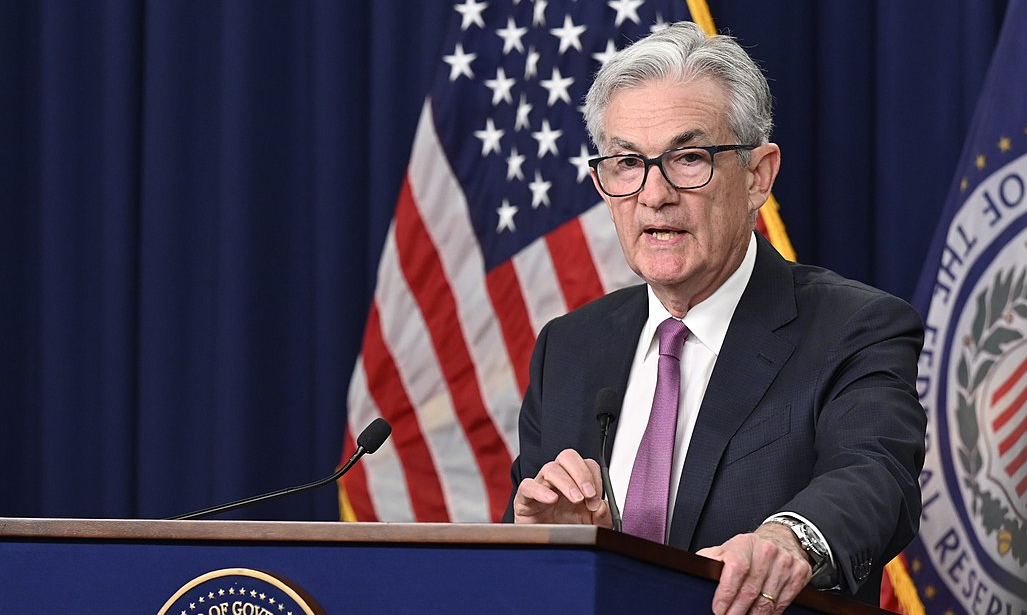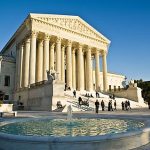
The Fed’s Federal Open Market Committee released the minutes to its December meeting yesterday, and the minutes further strengthen the view held by many Wall Street investors and observers that the Fed plans to implement rate cuts by the middle of 2024. Specifically, the most recent Fed survey of market participants “suggested that the first reduction in the policy rate would occur in June.”
This contrasts only slightly with the FOMC members themselves, who, in their own internal survey (i.e., the Summary of Economic Projections,or SEP) overwhelmingly suggests a cut to the policy rate of at least 50 basis points this year. Or as the minutes put it: “almost all participants indicated that, reflecting the improvements in their inflation outlooks, their baseline projections implied that a lower target range for the federal funds rate would be appropriate by the end of 2024.”
This all gives the impression that the Fed is all set for imminent rate cuts. The Fed’s overall messaging, however, is designed to do anything but send a clear message. This phenomenon helps illustrate how ephemeral is Fed policy at any given time, and how political. The Fed’s muddled messaging, as we’ll see below, helps to illustrate how the Fed seeks to serve various political interests while also trying to avoid the political pitfalls of both high price inflation and economic stagnation.
For example, one month before this most recent shift toward lowering the policy rate, Powell stressed that the committee had no plan at all for cutting the policy rate, telling reporters in November:
The fact is the committee is not thinking about rate cuts right now at all. We’re not talking about rate cuts … We’re still very focused on the first question, which is ‘have we achieved a stance of monetary policy that’s sufficiently restrictive to bring inflation down to 2% over time, sustainably?’ That is the question we’re focusing on.
Of course, as of the December meeting, the price inflation rate had not returned to the arbitrary two-percent target that the Fed invented about 20 years ago. The early-December reading of the CPI (minus food and energy) was at 3.9 percent, nearly double the target rate. Moreover, employment has only slightly softened thanks to sticky effects of the huge monetary inflation that occurred during 2020 and 2021. Yet, to virtually no one’s surprise—and contrary to Powell’s earlier claims—the Fed pivoted to “talking about rate cuts” with the speed of lightning and without achieving its stated goals.
Powell’s comments prompted a market rally as investors took Powell comments to mean a new round of easy money is in the works for 2024. This is almost certainly true, but the Fed personnel also simultaneously dialed back the easy-money talk. New York Fed president John Williams the next day announced “We aren’t really talking about rate cuts right now.”
That wasn’t the end of it, though. A day after Williams said rate cuts weren’t really on the table, the Chicago Fed’s Austan Goolsbee announced the Fed should start worrying about employment. As Goolsbee put it: “we’ve got to think about how restrictive do we want to be and are there dangers on the employment side of the mandate?” What he means is the Fed has worried about inflation long enough, and now it’s time to turn back to easy money to keep employment high.
The Fed Is a Political Institution
How are we to interpret all these mixed messages? We certainly should not look at it all as if the Fed were filled with dispassionate scholars who merely go where the numbers take them. When Fed officials claim to be “data driven” they are either lying or kidding themselves. The Federal Reserve is not a market institution. It is a political one. Powell and the FOMC are trying to play a complex political game of balancing expectations among certain constituent groups.
As Tho Bishop notes, the Fed in an election year will at the very least seek to avoid raising the target rate any further since that could trigger a recession quickly. The Fed wants to keep the administration happy—thus has it been for decades. Indeed, to this end, the Fed would prefer to cut the target rate immediately. But the Fed also fears public reaction to more price inflation—which a rate cut is likely to fuel. That means a mere “pause” on the target rate.
The Fed wants it both ways, though, and one strategy it uses to pursue this is to repeatedly hint that rate cuts are on the horizon—without actually cutting the policy rate. After all, finance students are taught that investors calculate value in terms of expected future cash flows. So, if the Fed is out there suggesting that “rate cuts are coming”—as the FOMC’s SEP clearly suggests—this tells investors that easy-money-dependent cash flows will improve “soon.” What qualifies as “soon” is never quite defined ahead of time, but that doesn’t matter to the Fed as it plays the expectations game.
This way, the Fed can hold the target rate steady out of fear of price inflation on the one hand. On the other hand, it can vaguely promise rate cuts at the first sign of real trouble.
We can see this strategy in the FOMC December minutes which do little to make any hard pronouncements about rate cuts. The minutes are more explicit, however, about whether the target policy rate will increase, and the document strongly suggests that the policy rate is “likely at or near its peak for this tightening cycle.” I have predicted this since the Fed “paused” at 5.5 percent last summer. It is very rare at the FOMC goes back to raising rates after pausing the rate for more than two months.
Beware What Comes After Rate Cuts
Wall Street and Biden administration officials will continue to push for cuts to the policy rate. Yet, in our current economic situation, neither Wall Street nor the White House should expect cuts to produce any economic miracles. As Daniel Lacalle writes “central banks may cut rates with no real effect on the productive economy and solve nothing. There may be a significant contraction in economic activity even if rates decline, as credit availability worsens even with declining rates, but markets keep inflating the financial bubble.” This happens when we’re in an economy in which the private economy outside the financial sector is in recession, but the aggregated economy doesn’t look so bad thanks to financial bubbles and government spending. In other words, Lacalle is telling us rate cuts right now would help Wall Street and Washington, but do little to help employment on Main Street.
So when will the Fed cut rates again? The cuts will come when Powell, et al, fear recession more than inflation. If the Fed starts cutting rates aggressively, that means the Fed is very afraid. So, if Wall Street actually gets what it wants—a target-rate cut of, say, 75 basis points or more—that’s a signal that the Fed sees very bad news on the horizon. The Fed will never admit it sees trouble ahead. After all, then-chairman Bernanke insisted there was no recession ahead in 2008. You’ll know the Fed sees trouble when it starts cutting rates.
We can see this play out in the lag between rate cuts and the onset of recessions. As the graph shows, rate cuts tend to begin several months before recessions become obvious:
So, when the Fed starts cutting rates, it’s a pretty safe bet that a recession is on the way. Bigger rate cuts also tend to signal bigger problems. Before the public catches on, however, the Fed can get away with vague, muddled, and contradictory messages that given the impression the Fed is fine tuning a delicate economic instrument. In reality, the Fed is merely playing politics.




